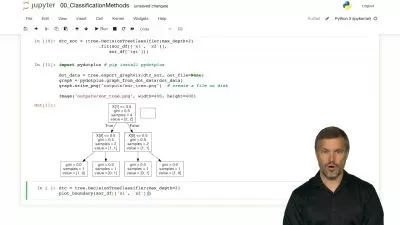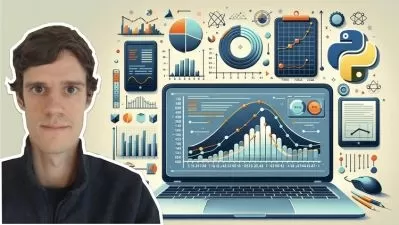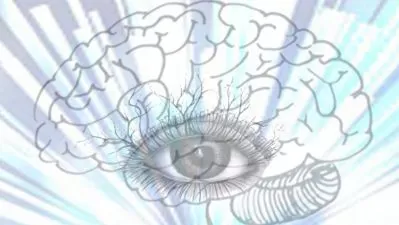Machine Learning & AI with Python | Mathematics & Statistics
EDUCBA Bridging the Gap
7:59:38
Description
Learn the core mathematical concepts, Probability, Statistics, Data Science, Data Analytics, Machine and Deep Learning
What You'll Learn?
- Understand and implement Regression, Classification, and Clustering algorithms
- Learn Linear Algebra, Calculus for Machine and Deep Learning
- Build Mathematical intuition especially Calculus required for Deep learning, Data Science and Machine Learning
- Refresh the mathematical concepts for AI and Machine Learning
Who is this for?
What You Need to Know?
More details
DescriptionThe future for AI is extremely promising and it isn’t far from when we have our own robotic companions. This has pushed a lot of developers to start writing codes and start developing for AI and ML programs. However, learning to write algorithms for AI and ML isn’t easy and requires extensive programming and mathematical knowledge. Mathematics forms the core of data science and machine learning. Thus, to be the best data scientist you can be, you must have a working understanding of the most relevant math. Getting started in data science is easy thanks to high-level libraries like Scikit-learn and Keras. However, understanding the math behind the algorithms in these libraries opens an infinite number of possibilities up to you. From identifying modeling issues to inventing new and more powerful solutions, understanding the math behind it all can dramatically increase the impact you can make over the course of your career. This is a highly comprehensive Mathematics, Statistics, and Probability course, you learn everything from Set theory, Combinatorics, Probability, statistics, and linear algebra to Calculus with tons of challenges and solutions for Business Analytics, Data Science, Data Analytics, and Machine Learning. Mathematics, Probability & Statistics are the bedrock of modern science such as machine learning, predictive risk management, inferential statistics, and business decisions. In this course, we will cover right from the foundations of Algebraic Equations, Linear Algebra, Calculus including Gradient using Single and Double order derivatives, Vectors, Matrices, Probability and much more.
Mathematics form the basis of almost all the Machine Learning algorithms. Without maths, there is no Machine Learning. Machine Learning uses mathematical implementation of the algorithms and without understanding the math behind it is like driving a car without knowing what kind of engine powers it.
You may have studied all these math topics during school or universities and may want to freshen it up. However, many of these topics, you may have studied in a different context without understanding why you were learning them. They may not have been taught intuitively or though you may know majority of the topics, you can not correlate them with Machine Learning.
This course of Math For Machine Learning, aims to bridge that gap. We will get you upto speed in the mathematics required for Machine Learning and Data Science. We will go through all the relevant concepts in great detail, derive various formulas and equations intuitively.
Who this course is for:
- Beginners who want to learn Data Science and Machine Learning
- Practitioners and experts who want to get a refresher of the maths for machine learning
The future for AI is extremely promising and it isn’t far from when we have our own robotic companions. This has pushed a lot of developers to start writing codes and start developing for AI and ML programs. However, learning to write algorithms for AI and ML isn’t easy and requires extensive programming and mathematical knowledge. Mathematics forms the core of data science and machine learning. Thus, to be the best data scientist you can be, you must have a working understanding of the most relevant math. Getting started in data science is easy thanks to high-level libraries like Scikit-learn and Keras. However, understanding the math behind the algorithms in these libraries opens an infinite number of possibilities up to you. From identifying modeling issues to inventing new and more powerful solutions, understanding the math behind it all can dramatically increase the impact you can make over the course of your career. This is a highly comprehensive Mathematics, Statistics, and Probability course, you learn everything from Set theory, Combinatorics, Probability, statistics, and linear algebra to Calculus with tons of challenges and solutions for Business Analytics, Data Science, Data Analytics, and Machine Learning. Mathematics, Probability & Statistics are the bedrock of modern science such as machine learning, predictive risk management, inferential statistics, and business decisions. In this course, we will cover right from the foundations of Algebraic Equations, Linear Algebra, Calculus including Gradient using Single and Double order derivatives, Vectors, Matrices, Probability and much more.
Mathematics form the basis of almost all the Machine Learning algorithms. Without maths, there is no Machine Learning. Machine Learning uses mathematical implementation of the algorithms and without understanding the math behind it is like driving a car without knowing what kind of engine powers it.
You may have studied all these math topics during school or universities and may want to freshen it up. However, many of these topics, you may have studied in a different context without understanding why you were learning them. They may not have been taught intuitively or though you may know majority of the topics, you can not correlate them with Machine Learning.
This course of Math For Machine Learning, aims to bridge that gap. We will get you upto speed in the mathematics required for Machine Learning and Data Science. We will go through all the relevant concepts in great detail, derive various formulas and equations intuitively.
Who this course is for:
- Beginners who want to learn Data Science and Machine Learning
- Practitioners and experts who want to get a refresher of the maths for machine learning
User Reviews
Rating
EDUCBA Bridging the Gap
Instructor's Courses
Udemy
View courses Udemy- language english
- Training sessions 55
- duration 7:59:38
- Release Date 2024/03/19






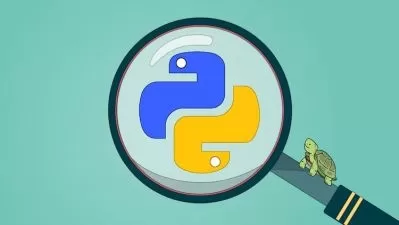

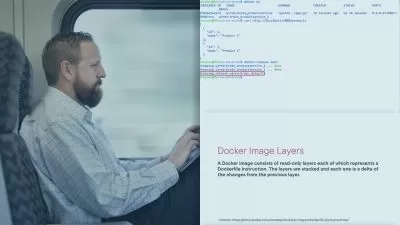

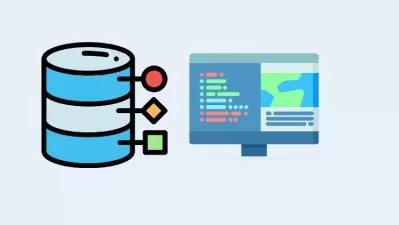

![Data Science and Machine Learning Fundamentals [Theory Only]](https://traininghub.ir/image/course_pic/13388-x225.webp)

